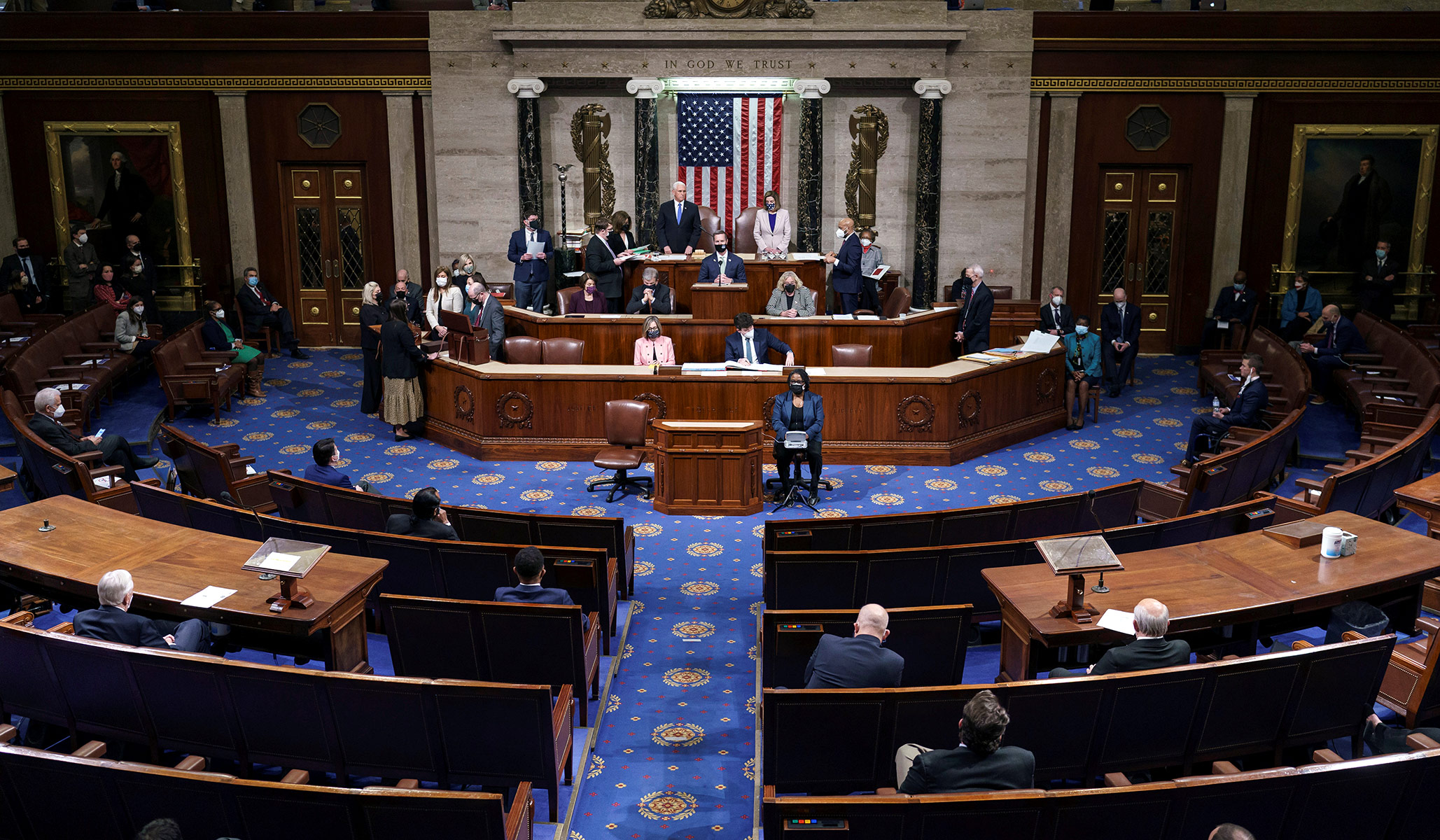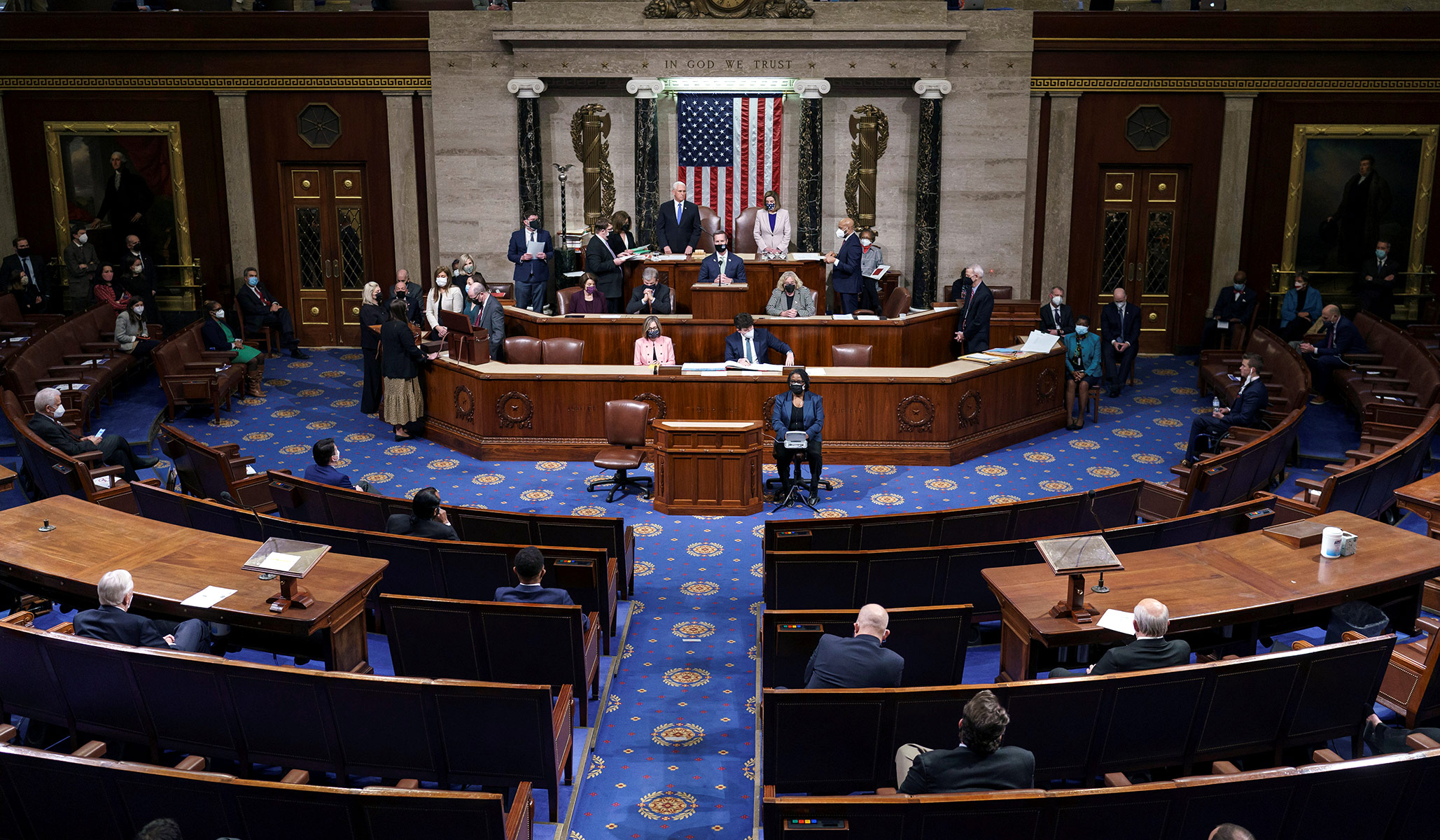
The 2020 presidential election concluded with a political and constitutional crisis unmatched in the United States since the 1876 election. Congress should respond, as it did after 1876, by shoring up and clarifying the process for resolving presidential elections with disputed outcomes. That will require the votes of Senate Republicans, who should support reforming the Electoral Count Act as a matter of both good policy and political self-interest.
Article II of the Constitution, together with the Twelfth Amendment, sets forth a basic division of labor in electing the president. Congress picks the date for states to choose electors and must set a uniform date for the electors to cast their votes in their own states. State legislatures have plenary power to decide how the electors are selected; the legislature itself may choose the electors, but since 1876, all states have instead held a popular vote. The electoral votes are opened by the president of the Senate (the vice president, if one is in office) in the presence of the House and Senate, “and the votes shall then be counted.” But the Constitution leaves many questions unanswered.
In 1876, in the waning days of Reconstruction, multiple Southern state governments were presented with rival slates of electors, precipitating a crisis that cast a permanent pall over the legitimacy of Rutherford B. Hayes’s election. Clearer rules were needed to clarify that the slate certified by state authorities would be respected.
In 1887, Congress passed the Electoral Count Act, which was designed to clarify a further division of labor: (1) election contests are handled in the first instance by state courts and state elections officials (a process that, due to the growth of federal voting-rights laws, today includes more resort to federal courts); (2) after those contests are exhausted, the winning electors are certified by the governor of the state; (3) the vice president opens and counts the votes, but the House and Senate each vote to resolve any disputed slates of electors; and (4) if a state delivers just one slate certified by the governor by a “safe harbor” deadline, that slate is “conclusive.”
There is much in this design for conservatives to like. It respects the primacy of states in the election process. It provides deadlines that promote certainty. Its approach to federalism and separation of powers avoids concentrating power in any one individual or body. It is a bulwark against mischievous efforts to eliminate the role of the Electoral College.
Unfortunately, while the intended meaning of the Electoral Count Act is mostly clear, its rambling, turgid language has been exploited to bolster meritless challenges, and its processes engendered litigation in 2000 and worse in 2020.
When Donald Trump ran out of options to overturn in the courts the vote counts in a handful of closely divided states, he took the disgraceful step of pressuring state legislators in Michigan and elsewhere to select their own slates of electors, on the theory that their power over the selection of electors in the first place could override the selection made by counting the state’s popular vote. Trump also pressured Republican governors in Georgia and Arizona to call their legislatures into special session and blamed them publicly for his defeat when they refused.
Trump’s demands misread the Constitution, which requires states to make their choice on the day selected by Congress: If they make that choice by popular vote, there is no second bite at the apple later.
When these efforts failed, the Trump campaign simply had several slates of Trump electors “cast” public votes on the required day, without any sanction from any arm of state government. A lawsuit, objections in Congress, legal memos by Trump adviser John Eastman, and ultimately the January 6 “Stop the Steal” rally and subsequent riot at the Capitol were all directed at having either Vice President Mike Pence or Congress certify these fraudulent electors, or at least delay the counting of votes by electors properly certified by state governors.
The theory that the vice president could unilaterally certify or legitimize electors who had never been authorized by any arm of state government was particularly preposterous and dangerous. Moreover, because Trump had convinced some of his supporters that there was a legitimate debate in the Capitol on January 6 over which electors to certify, a subset of them chose to target that process with an angry mob.
Nobody should want a national election resolved this way again. Moreover, Trump’s pressure campaigns against Pence and Republicans in Congress and the states put many long-loyal Trump allies in a politically painful situation. The acrimony played a huge role in delivering two Georgia Senate seats and control of the chamber to Democrats on January 5 and is the entire reason why Trump is backing a divisive primary challenge to Georgia governor Brian Kemp that could end up handing the governorship to Stacey Abrams.
Knowing that Trump may run again, Republicans have every reason to want the rules to be clear enough that they are not asked to do anything similar again. And knowing that Democrats have a long history of post-election contests and rejecting the legitimacy of their election losses, Republicans should also want rules in place that make it harder for the other party to overturn a future Republican victory.
Of course, no amount of statutory clarity can eliminate every creative bid to circumvent the process. Eastman and other Trump allies raised a number of constitutional challenges to the Electoral Count Act. We found these unpersuasive, as did Pence and most of Congress. At least a clearer statute will eliminate the major avenue for contention.
There are fair debates over what a revised Electoral Count Act should look like. At a minimum, it should make explicit and undeniable that (1) the vice president does not decide which electoral votes to count; and (2) states that hold popular votes to choose electors cannot later attempt to have their legislatures select their own electors. There is also a strong case for requiring more than a single senator to object to a state’s electors in order to trigger a vote, for requiring more than a majority vote of each house to throw out a certified slate of electors, and for clarifying that Congress is not the place to relitigate any challenge that was, or could have been, raised in the courts or in state election-contest proceedings.
Democrats, for all their public hand-wringing over January 6 and Trump’s election contest, have been slow to focus on Electoral Count Act reform, preferring instead to push their pet proposals for sweeping new federal controls on voting, elections, redistricting, and political speech. Republicans are right to resist any effort to tie Electoral Count Act reform to any of those proposals.
Senate Democrats, however, have recently been getting more serious about revising the Electoral Count Act. By participating in that process, Senate Republicans can pressure them to produce a clean standalone bill and can have input to shape the revisions.
Republicans are understandably mistrustful of a legislative process controlled by Democrats and are hesitant to do anything that looks like giving Joe Biden a win or siding with Biden against Trump. The former president is likely to react poorly once again to Republicans voting for a bipartisan bill. But if anything, a show of bipartisan cooperation on neutral rules for resolving election contests would rob Democrats of a rhetorical weapon. Suffering Trump’s passing anger now is preferable to facing another of his pressure campaigns if he is a candidate again in 2024.
It’s also the right thing to do.

